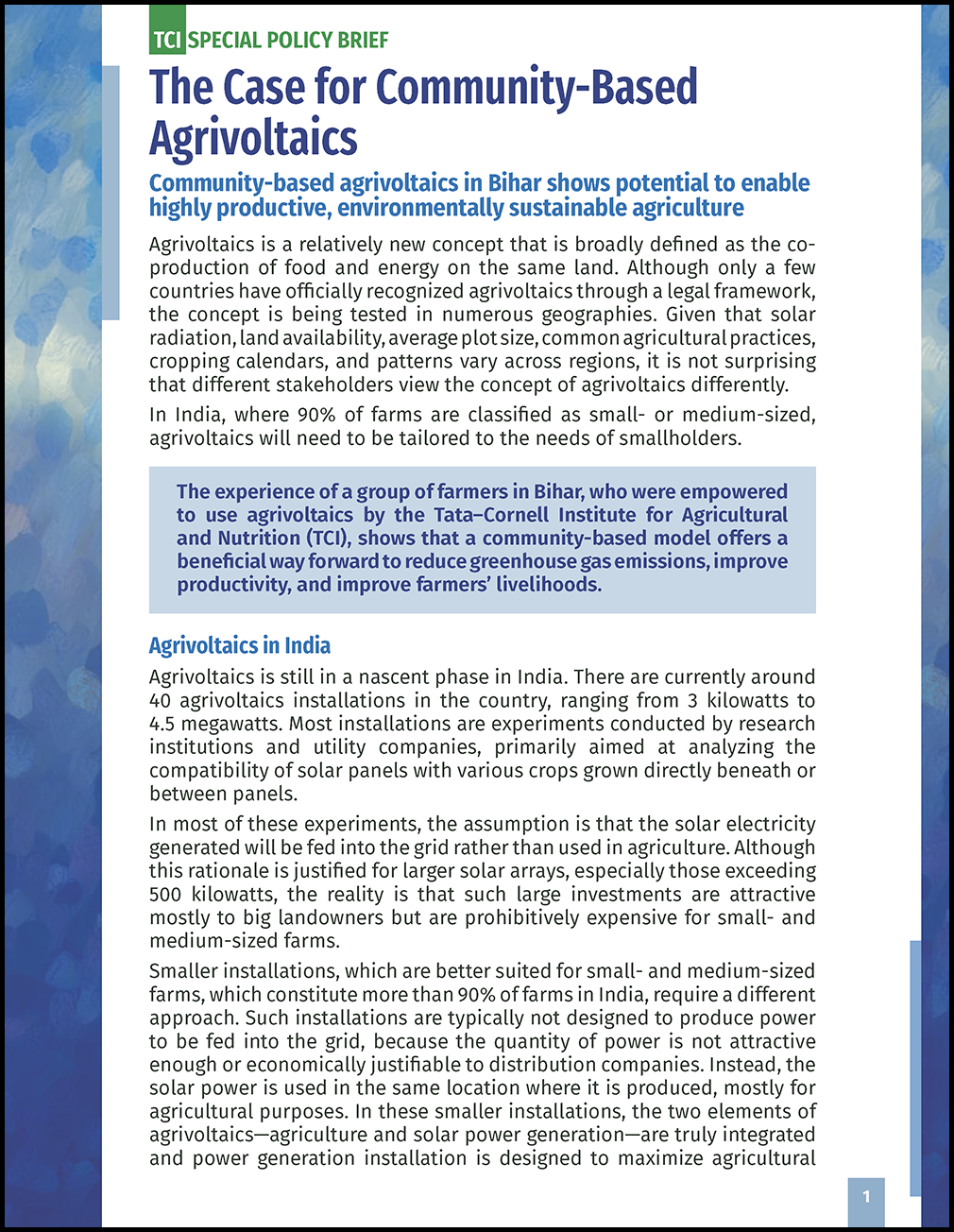The Case for Community-Based Agrivoltaics
 This special policy brief presents the benefits of community-based agrivoltaics for smallholder farmers in India, based on a pilot agrivoltaics site that TCI built with a group of farmers in Bihar. The brief provides an assessment of how agrivoltaics can help reduce greenhouse gas emissions, increase productivity, and improve farmers’ livelihoods.
This special policy brief presents the benefits of community-based agrivoltaics for smallholder farmers in India, based on a pilot agrivoltaics site that TCI built with a group of farmers in Bihar. The brief provides an assessment of how agrivoltaics can help reduce greenhouse gas emissions, increase productivity, and improve farmers’ livelihoods.
Community-based agrivoltaics in Bihar
While large-scale agrivoltaics involves the positioning of solar panels on agricultural land in order to produce large amounts of electricity for the grid, TCI’s community-based site is designed to maximize agricultural output. A 20-kilowatt solar array powers a flour mill and micro-irrigation systems for more than eight acres of farmland. Micro-irrigation allows farmers to grow crops during dry seasons and experiment with different intercropping systems. It also minimizes the amount of water used, which lowers emissions caused by flooding. The farmers will also generate income by charging for use of the flour mill.
Zero-Hunger, Zero-Carbon Food Systems
This policy brief was published as part of TCI’s project on Zero-Hunger, Zero-Carbon Food Systems. The project aims to support the reduction of GHG emissions associated with agriculture while improving productivity and benefiting farmer livelihoods.

